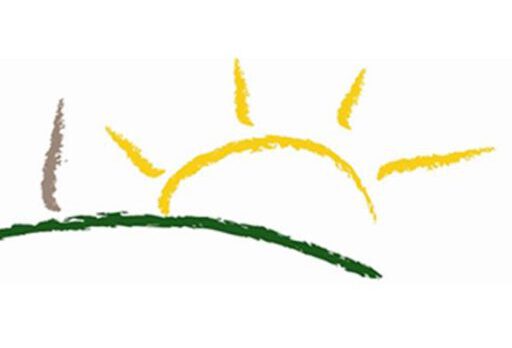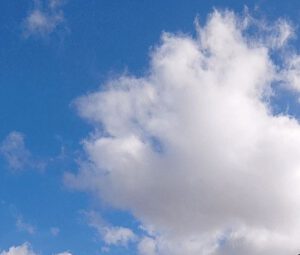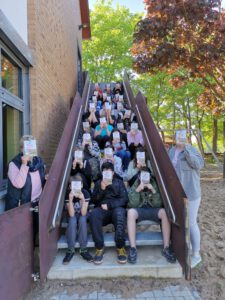[18] The Mills Brothers, who were famous in part because in their vocals they sometimes mimicked instruments,[19] were an additional influence on street vocal harmony groups, who, singing a cappella arrangements, used wordless onomatopoeia to mimic musical instruments. Their second single, "Maybe" hit the charts, No. As the pivotal recording mogul in the Detroit area, Battle was an important player in the independent label network. Gribin, Anthony J., and Matthew M. Shiff (1992). Check out our doo wop groups selection for the very best in unique or custom, handmade pieces from our shops. 30 popular meanings of DOO abbreviation: 50 Categories Next Suggest to this list Related acronyms and abbreviations Share DOO Meaning page [72], In late 1957, seventeen-year-old Robinson, fronting a Detroit vocal harmony group called the Matadors, met the producer Berry Gordy, who was beginning to take up new styles, including doo-wop. FLAMINGOS 45 True Love / Come On To My Party DOO WOP Soul END 1963 w2679 $12.99 + $4.00 shipping . Doo-wop experienced a resurgence in popularity at the turn of the 21st century with the airing of PBS's doo-wop concert programs: Doo Wop 50, Doo Wop 51, and Rock, Rhythm, and Doo Wop. [173] In 1956, Frankie Lymon and the Teenagers appeared on the Frankie Laine show in New York, which was televised nationally, performing their hit "Why Do Fools Fall in Love?". In the mid-1950s, a number of rhythm and blues acts performing in the vocal ensemble style later known as doo-wop began to cross over from the R&B charts to mainstream rock 'n' roll. His album Modern Lovers 88 (1987), with doo-wop stylings and Bo Diddley rhythms, was recorded in acoustic trio format.[169]. [79] Written by Miracles lead singer Smokey Robinson and Motown Records' president Berry Gordy, "Bad Girl" was the first of several of the Miracles' songs performed in the doo-wop style during the late 1950s. [136][128], The history of modern Jamaican music is relatively short. [121] "When We Dance" became a national hit, by the Mello-Moods, "The Glory of Love" by the Five Keys, and "Shouldn't I Know" by the Cardinals. [46], In 1948, Jubilee Records signed the Orioles to a contract, following which they appeared on Arthur Godfrey's Talent Scout radio show. [143], Like their American exemplars, many Jamaican vocalists began their careers by practicing harmonies in groups on street corners, before moving on to the talent contest circuit that was the proving ground for new talent in the days before the rise of the first sound systems. [98], The Willows, an influential street corner group from Harlem, were a model for many of the New York City doo-wop acts that rose after them. These were a major outlet for doo-wop performers to be discovered by record company talent scouts. They won only third place, but Godfrey invited them back twice. Doo-wop has complex musical, social, and commercial origins. By the late 1950s and early 1960s, many Italian-American groups had national hits: Dion and the Belmonts scored with "I Wonder Why", "Teenager in Love", and "Where or When";[37] the Capris made their name in 1960 with "There's a Moon Out Tonight"; Randy & the Rainbows, who charted with their Top #10 1963 single "Denise". Music historian Billy Vera points out that these recordings are not considered to be doo-wop.[171]. One such group, the Penguins, included Cleveland "Cleve" Duncan and Dexter Tisby, former classmates at Fremont High School in the Watts neighborhood of Los Angeles. I strongly By 1948, RCA Victor was marketing black music under the name "Blues and Rhythm". This list may not reflect recent changes. [58] The Chicago record companies took note of this trend and scouted for vocal groups from the city that they could sign to their labels. with temperatures near the mid-70s. A Daddy Cool Original Doo-Wop Ditty. The Doo Wop Groups The Danleers Top: l to r: Roosevelt Mays, Nat McCune Bottom (l to r) Willie Ephraim, Jimmy Weston, Johnny Lee The Danleers formed while teenagers in Brooklyn in 1958. NIOS helped in fulfilling her aspiration, the Board has universal acceptance and she joined Middlesex University, London for BSc Cyber Security and [57], Baltimore vocal groups gathered at neighborhood record stores, where they practiced the latest hits in hopes that the store owners' connections with record companies and distributors might land them an audition. [74] Early recordings by Gordy's Tamla Records, founded several months before he established the Motown Record Corporation in January 1959,[75] were of either blues or doo-wop performances.[76]. My childs preference to complete Grade 12 from Perfect E Learn was almost similar to other children. [126] Like the rest of the entertainment industry, American Bandstand camouflaged the intrinsic blackness of the music in response to a national moral panic over rock 'n' roll's popularity with white teenagers, and the show's Italian American dancers and performers were deethnicized as "nice white kids", their Italian American youth identity submerged in whiteness. So the same thing started with rap groups around '76 or so. The Best Soul Singers/Groups of All In the 1940s black youths in the city began to sing the rhythm and blues styling that came to be known as doo-wop. [139] In the late 1940s and early 1950s, many working-class Jamaicans who could not afford radios attended sound system dances, large outdoor dances featuring a deejay (selector) and his selection of records. [65], In 1945,[66] Joe Von Battle opened Joe's Record Shop at 3530 Hastings Street in Detroit; the store had the largest selection of rhythm and blues records in the city, according to a 1954 Billboard business survey. That said, who are best doo-wop groups of all time? [87] There, African American groups such as the Ravens, the Drifters, the Dominoes, the Charts, and the so-called "bird groups", such as the Crows, the Sparrows, the Larks, and the Wrens, melded rhythm and blues with the gospel music they had grown up singing in church. [67] Young aspiring performers would gather there in hopes of being discovered by the leading independent record company owners who courted Battle to promote and sell records, as well as to find new talent at his shop and studio. Although the musical style originated in the late 1940s and was very popular in the 1950s, the term "doo-wop" itself did not appear in print until 1961, when it was used in reference to the Marcels' song, "Blue Moon", in The Chicago Defender,[22][23] just as the style's vogue was nearing its end. Other young male vocalists of the era took note and adjusted their own acts accordingly. All of a sudden, everywhere you turned you'd hear kids rapping. The style's influence is heard in the music of the Miracles, particularly in their early hits such as "Got A Job" (an answer song to "Get a Job"),[177] "Bad Girl", "Who's Loving You", "(You Can) Depend on Me", and "Ooo Baby Baby". It reached number 7 on the U.S. It faded again after the "British Invasion" of 1964. doo / ( du) / noun a Scot word for dove 1, pigeon 1 QUIZ Question TAKE THE QUIZ TO FIND OUT Words nearby doo Don't put the cart before the horse, Don't throw out the baby with the Learn more WHY doo Services Service portfolios according to your needs More The songwriting team of Goffin and King, who worked for Don Kirshner's Aldon music at 1650 Broadway (near the famed Brill Building at 1619),[159] offered Greenberg a song, "Will You Love Me Tomorrow? [17] While these features provide a helpful guide, they need not all be present in a given song for aficionados to consider it doo-wop, and the list does not include the aforementioned typical doo-wop chord progressions. recommend Perfect E Learn for any busy professional looking to He joined a group, the Premiers, and helped members Herman Santiago and Jimmy Merchant rewrite a song they had composed to create "Why Do Fools Fall In Love", which won the group an audition with Gee Records. They contend that in the extremely competitive independent record company business during the postwar era, the practices of Jewish record owners generally were more a reflection of changing economic realities in the industry than of their personal attitudes. Doo-wop was popular with California Mexican Americans, who were attracted in the 1950s to its a capella vocals; the romantic style of the doo-wop groups appealed to them, as it was reminiscent of the traditional ballads and harmonies of Mexican folk music. ~ Ron Wynn, All-Music Guide Get A Job was recorded by the Doo-wop (also spelled doowop and doo wop) is a genre of rhythm and blues music that originated among African-American youth in the 1940s, mainly in the large cities of the United States, including New York, Philadelphia, Chicago, Baltimore, Newark, Detroit, Washington DC, and Los Angeles. [151][152][149], The development of rhythm and blues coincided with the issue of racial segregation becoming more socially contentious in American society, while the black leadership increasingly challenged the old social order. They were forcefully trying to express themselves and they made up in fantasy what they missed in reality. The song they performed, "It's Too Soon to Know", often cited as the first doo-wop song,[47] went to number 1 on Billboard's "Race Records" chart, and number 13 on the pop charts, a crossover first for a black group. 15 on Billboard's Hot 100. [53][54], The Swallows began in the late 1940s as a group of Baltimore teenagers calling themselves the Oakaleers. [110], New York was also the capital of Italian doo-wop, and all its boroughs were home to groups that made successful records. [122], The Silhouettes' crossover hit "Get a Job", released in 1957, reached number one on the pop and R&B charts in February 1958, while Lee Andrews & the Hearts had hits in 1957 and 1958 with "Teardrops", "Long Lonely Nights", and "Try the Impossible". [101], The heyday of the girl group era began in 1957 with the success of two teen groups from the Bronx, the Chantels and the Bobbettes. Had a great experience here. Although the ultimate longevity of doo-wop has been disputed,[182][183] at various times in the 1970s1990s the genre saw revivals, with artists being concentrated in urban areas, mainly in New York City, Chicago, Philadelphia, Newark, and Los Angeles. When you think of doo-wop bands, however, some of the first singers that come to mind are The Platters, The Drifters, and of course, The Temptations. [35], Particularly productive doo-wop groups were formed by young Italian-American men who, like their black counterparts, lived in rough neighborhoods (e.g., the Bronx and Brooklyn), learned their basic musical craft singing in church, and would gain experience in the new style by singing on street corners. [56] As in all the major urban centers of the US, many of the teen gangs had their own street corner vocal groups in which they took great pride and which they supported fiercely. 1 on Billboard's national Most-Played Juke Box Race Records chart, and, in a first for a doo-wop song, the record crossed over to the mainstream pop chart, where it reached no. [42] Margo Sylvia was the lead singer for the Tune Weavers. successful learners are eligible for higher studies and to attempt competitive These trailblazing supergroups are among the best doo-wopers ever and inspired generations of vocal harmony and modern a cappella. All of them were influenced by the Robins, a successful R&B group of the late 1940s and the 1950s who formed in San Francisco, or by other groups including the Flairs, the Flamingos (not the Chicago group) and the Hollywood Flames. Cameo Records and Parkway Records were major record labels based in Philadelphia from 1956 (Cameo) and 1958 (Parkway) to 1967 that released doo-wop records. Members: Carl White - lead John "Sonny" Harris Al DOO Meaning What does DOO mean as an abbreviation? [119] The Turbans, Philadelphia's first nationally charting R&B group,[120] formed in 1953 when they were in their teens. [89], Blacks were forced by legal and social segregation, as well as by the constraints of the built environment, to live in certain parts of New York City of the early 1950s. Soul and funk bands such as Zapp released the single ("Doo Wa Ditty (Blow That Thing)/A Touch of Jazz (Playin' Kinda Ruff Part II)"). After World War II, the black population of the metro grew to about 530,000 by 1960. He sought artists who understood that the music had to be updated to appeal to a broader audience and attain greater commercial success. 18 tracks This 18 track album showcases the talents of one of most memorable soul bands of the 60's and 70's. Thus they developed a form of group harmony based in the harmonies and emotive phrasing of black spirituals and gospel music. They rehearsed on street corners and apartment stoops,[31] as well as under bridges, in high school washrooms, and in hallways and other places with echoes:[13] these were the only spaces with suitable acoustics available to them. Some groups cut demos at local studios and played them for recording producers, with the aim of getting signed to a record deal. [55], Some Baltimore doo-wop groups were connected with street gangs, and a few members were active in both scenes, such as Johnny Page of the Marylanders. Competitive music and dance was a part of African American street culture, and with the success of some local groups, competition increased, leading to territorial rivalries among performers. [113], Italian Americans kept African Americans out of their neighborhoods with racial boundary policing and fought against them in turf wars and gang battles, yet they adopted the popular music of African Americans, treated it as their own, and were an appreciative audience for black doo-wop groups. [167], By 1963 and 1964, proto-punk rocker Lou Reed was working the college circuit, leading bands that played covers of three-chord hits by pop groups and "anything from New York with a classic doo-wop feel and a street attitude". [112] Johnny Maestro, the Italian American lead singer of the interracial Bronx group the Crests, was the lead on the hit "Sixteen Candles". [77] "Bad Girl" was the group's first national chart hit,[78] reaching #93 on the Billboard Hot 100. During the late 1940s and early 1950s, independent record labels gained control of the black record market from the major companies, and Chicago rose as one of the main centers for rhythm and blues music. A few groups, such as the Platters and Rex Middleton's Hi-Fis, had crossover success. Entdecke TJ Lubinsky prsentiert Original Masters DOO WOP GENERATIONEN 6-CD Set in groer Auswahl Vergleichen Angebote und Preise Online kaufen bei eBay Kostenlose Lieferung fr viele Artikel! The group's most notable hit was "The Wind". Zappa took the song to Laboe, who recruited the lead vocalist of the Penguins, Cleve Duncan, for a new iteration of the group, recorded it, and released it as a single on his record label. (l to r) Angelo D'Aleo, Fred Milanop, Carlo M David Whitmire Hearst Jr,
Portmanteau For A Fuzzy Alter Ego Crossword,
Hottest Msnbc Reporters,
How Many Pellets In 000 Buckshot 12 Gauge,
Vesta Conjunct North Node Synastry,
Articles D



